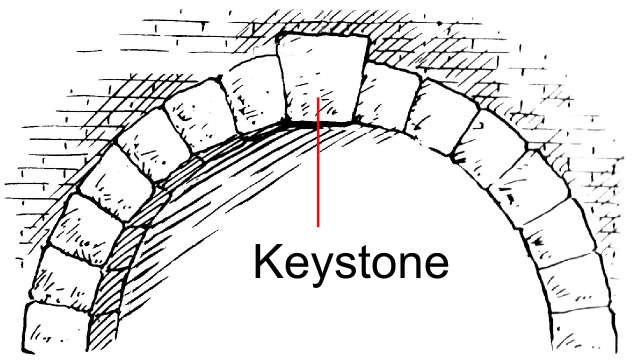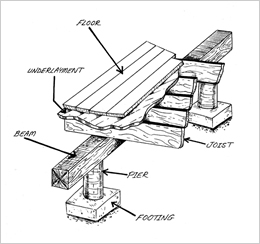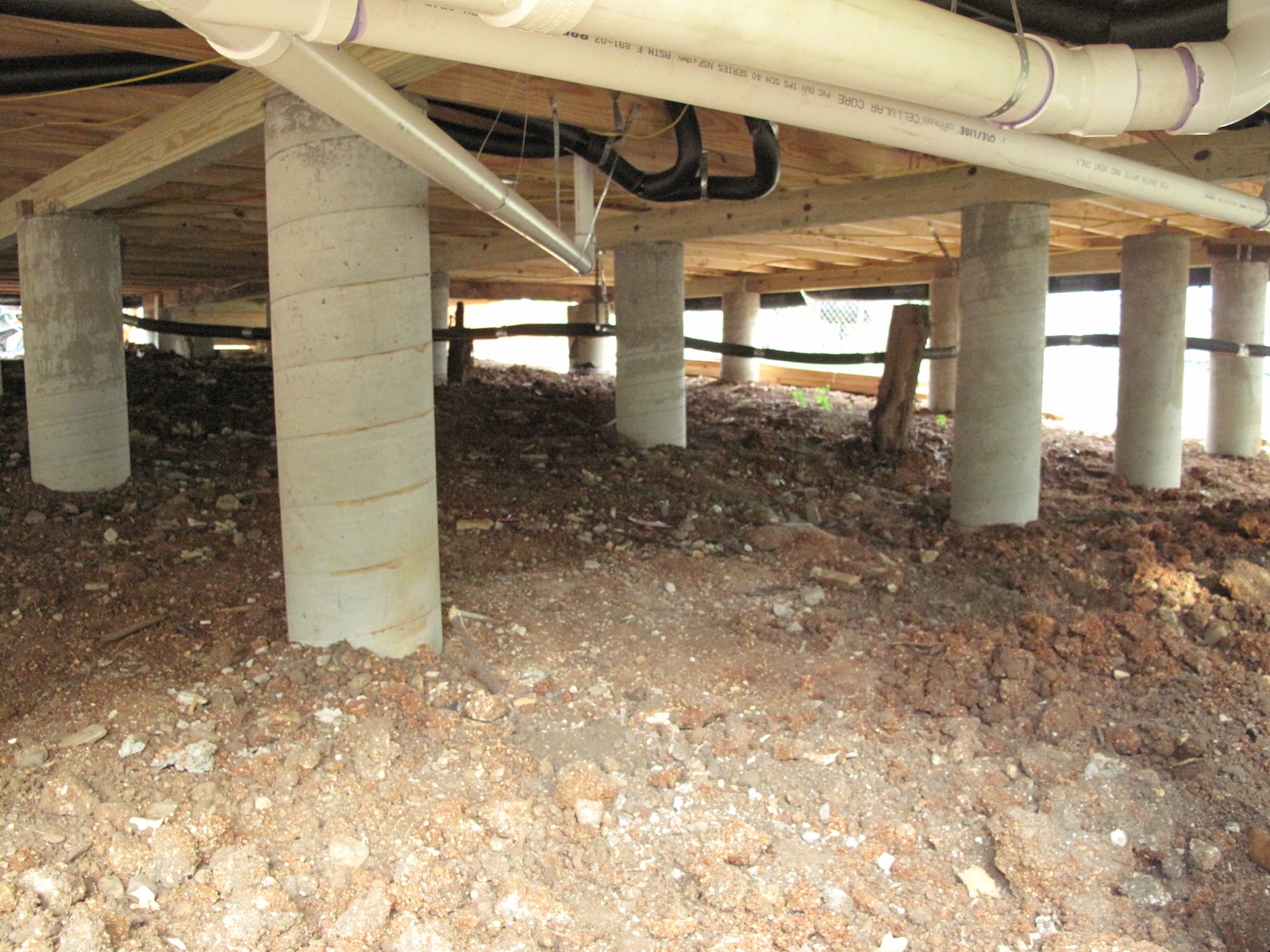The word brings to mind
concrete, cinder blocks, or large stones. Something hard. Something strong.
Something capable of supporting immense weights.
The keystone is another weight-bearing device. Again, Merriam-Websters has several definitions but my favorite is: something on which associated things depend for support. Keystones are interesting and
different from foundations. Without them the arch cannot stand, but they also
need foundations. The keystone does not support the weight of the arch, but is
the single most important piece in it.

There are several different
kinds of foundations in the construction industry. Slab-on-grade foundations
are shallow foundations that are most often constructed of reinforced concrete.
Slab-on-grade foundations can be built quickly and are relatively inexpensive
to build. The function of a slab-on-grade foundation is not to resist or limit
the amount of heave that might occur beneath a slab foundation, but to move up
and down with the shrink and heave. Slab-on-grade houses do not have basements.
Shallow foundations are susceptible to seasonal movement from rainfall,
drought, freeze/thaw cycles, and temperature changes and transpiration of
moisture thru the roots of large plants and trees. These types of foundations
are meant to be flexible with their environment. Not to resist changes, but to
kind of move with them.

Pier and beam foundations, as
the name suggests, are a concrete footing and pier which supports wood beams
and floor joists. These foundations usually have crawl spaces underneath the
home. These types of foundations would appear to have all the weight supported
in a few spaces, instead of spread out over the space of a whole slab. One would think that there would be immense amounts of pressure in a small area with this set up.

Basements are most often
constructed in northern climates where freeze/thaw conditions occur and the
footing depth must extend beneath the frost line—often four or more feet below
the surface. In many of these cases, builders will go ahead and excavate for a
basement and build basement walls that provide the support for the house. The
bottom of the basement is typically below the depth over which the majority of
the soil’s shrink or swell due to climate occurs. Basements can suffer basement
floor heave and lateral wall movement, however. Deep foundations reach depths
that are not normally affected by seasonal environmental changes and are
considered to be out of the zone of influence.
There are a multitude of other
types of both shallow and deep foundations. Each of these have their benefits
and drawbacks. Slab on grade is meant to go with the flow. Deep foundations are
meant to be so deep that nothing affects them.
The major benefit to going
with the flow is that the foundation moves with what’s under it and doesn’t
upset the things that it supports all that much. Going with the flow, however,
can take you places that you do not want to go, that are out of your comfort
zone, if you let it. Deep foundations are strong. They’re meant to be. Rigid,
unbending, immovable. All these can be great charactristics to build upon.
However, if things are to rigid, when something moves, the foundation may just
crack and break because it is so inflexible, and the whole thing comes crashing down.
This leads us to what in the
world do you do if your foundation breaks, cracks, or becomes incapable of
supporting the weight that it once did?


Do you discard your house?
Just give it up for a new one? Do you just say “Ah, it’s just too much trouble
to deal with. “ What if you love your home and do not want to give it up? Well
in that case you do what you have to do to repair your foundation. You may have to jack up your house, show the
foundation some TLC, then set the house back down on it. Sometimes you can just
fill in underneath the foundation with more concrete, thereby giving it the
support it needs to continue doing its job. Other times the cracks maybe small
and merely cosmetic, but you still should address these as soon as possible,
lest they become bigger cracks, and bigger problems. A lot of money and a lot
of time can be invested in fixing your foundation. But, you have to remember,
that you are protecting your most valuable asset.
Imagine being someone’s foundation, or keystone. The rock that they build on. Their very lives. This is a big responsibility. A person might be fine with it at first. Able to support all that weight. They may even come to grow accustomed to it and love it. But sooner or later, just like any foundation that is built on imperfect ground (and we are all imperfect), you will crack. Hell, you may have been cracked to begin with and the cracks just weren’t noticeable. If you crack or were already cracked, then eventually whats built on top of you will crack and began to lean. If you are someone else’s foundation, who fixes you when you are broke? If we use the construction analogy, who, or what supports the weight while you are being fixed? What if you are dealing with a dual foundation issue? This is when you are someone’s foundation and they are yours. What do you do when your both broken? Spit and glue? That repair will not last long, and the damage will come back, often worse than before. Maybe you fix one up proper, and then come back and fix the other. Do you just throw it all away, and build a new foundation on someone else? I think I prefer to spend my time, effort, and money (which is not necessarily currency) to repair the foundation. I want to stay in the house that I love so much. It has it’s little, shall we say, imperfections, but I would not love it if it were any other way. All great houses have little imperfections. Little things that make them…well….them. I don’t know how I will go about jacking myself up and repairing the cracks, but I think that a wise woman has given me an idea of where to start. And just like a concrete foundation, I’ve sucked up a lot of moisture, and it’s already started to crack me. I’ve been cracked for some time. I need repairing, and the easiest way to repair something is to get rid of what is causing the cracks, then you repair them. So, I think that sometime soon, I too will start spitting out all the moisture that is getting in the very fiber of my being and cracking me. Then maybe the repair process can begin. Then maybe, just maybe, I’ll be able to be that foundation that is needed again.

Thanks for listening....Andy

No comments:
Post a Comment